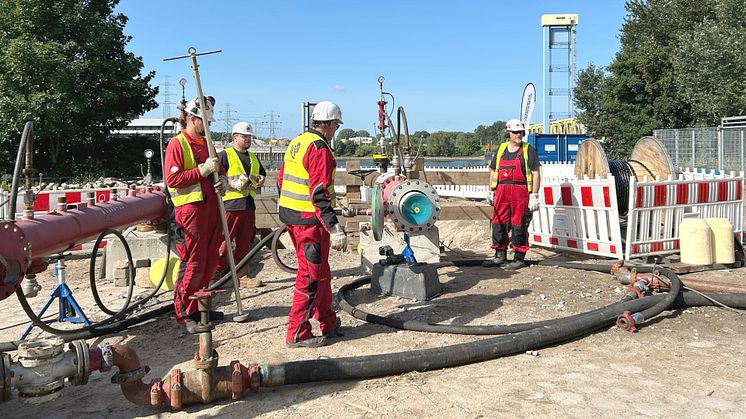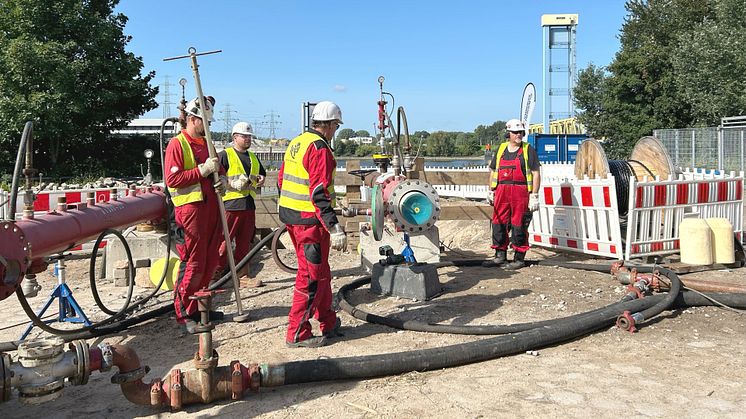
News -
Rededicating a Natural Gas Pipeline in the Hamburg Gas Grid for Hydrogen Transport
The construction of the Hamburg Hydrogen Industry Network ("HH-WIN") is progressing rapidly. After the pipeline sections south of the Elbe begin operation in 2027, green hydrogen is expected to cross the Süderelbe in this area. For this reason, Hamburger Energienetze, municipal operator of the gas grid in the hanseatic city, is cleaning and inspecting an existing natural gas pipeline near the Kattwyk Bridge. The pipeline runs approximately five meters beneath the riverbed of the Süderelbe. This so-called "düker" (a pipeline running under a river) consists of concrete-encased steel pipes—one currently transports natural gas, and the other is planned to be used for hydrogen in the future.
With the Süderelbe crossing, the HH-WIN hydrogen network will reach the Elbe island of Hohe Schaar from Moorburg. Hohe Schaar is home to additional industrial companies and a planned hydrogen import terminal. A specialized company has now cleaned the approximately 450-meter-long düker pipeline and then thoroughly inspected it for condition and material properties.
Michael Dammann, Technical Managing Director of Hamburg Energienetze, sees several advantages in repurposing the düker: “Making the existing pipeline ready for hydrogen saves both construction time and investment costs. However, we are currently focused on verifying the integrity of this decades-old pipeline section to ensure our hydrogen network operates just as safely and reliably as our other energy networks.”
To clean and inspect the Kattwyk düker, Hamburg Energienetze sends so-called "pigs" through the pipeline. Compressed air propels these elongated devices through the roughly 30-centimeter-thick steel pipes. First, a roughly four-meter-long cleaning pig was used to remove dust deposits and other residues from the inner walls of the pipe. This was followed by two inspection pigs: the first, equipped with ultrasonic sensor technology, provides a highly precise electronic image of the steel wall thicknesses. A second pig, fitted with high-tech sensors, uses magnetic resonance technology to deliver detailed information on corrosion levels and the material condition of the pipeline.
As part of this measure, Hamburg Energienetze also included a pipeline that will continue to be part of the natural gas network. During the operation, the gas supply to the harbor area north of the Süderelbe was temporarily rerouted via two other Elbe crossings—near the Köhlbrand Bridge and the Elbe Bridges. After pigging, Hamburg Energienetze is now carefully evaluating all measurement data to initiate any necessary repair work. In the future, hydrogen is expected to flow through the Kattwyk düker at a pressure of 25 bar.

